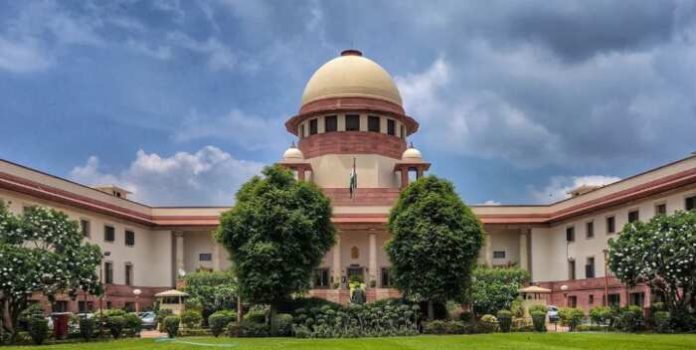Facts
The petitioner, His Holiness Swami Kesavananda Bharati, was the head of the Edneer Mutt, a religious institution in Kerala. He filed a writ petition under Article 32 of the Constitution of India in 1970 to challenge the Kerala Land Reforms (Amendment) Act, 1969, which had been passed by the state government.
The petitioner argued that this Act, which placed restrictions on the management of his religious property, violated his fundamental rights under:
- Article 14 (Right to Equality)
- Article 19(1)(f) (Right to Property, now repealed)
- Article 25 (Freedom of Religion)
- Article 26 (Freedom to manage religious affairs)
During the pendency of the petition, the Parliament passed the 24th, 25th, and 29th Constitutional Amendment Acts. These amendments sought to nullify the Supreme Court’s earlier judgment in Golaknath v. State of Punjab (AIR 1967 SC 1643), which had held that Parliament could not amend fundamental rights.
The new amendments aimed to give Parliament absolute and unfettered power to amend any part of the Constitution, including the Fundamental Rights.
👉 Thus, the core of the case shifted from a simple property dispute to a fundamental constitutional question about the limits of parliamentary power.
Issues
The central legal issue before the Supreme Court was:
Is Parliament’s power to amend the Constitution under Article 368 unlimited, or does it have an implied limitation?
Specifically, does the amending power extend to altering or abrogating the “basic structure” or essential features of the Constitution?
Arguments
Arguments of the Petitioner (represented by Mr. N. A. Palkhivala):
- The power to amend under Article 368 is not a power to destroy. It is a limited power that allows for amendments but not the abrogation of the Constitution’s core identity.
- The Constitution has fundamental and essential features such as democracy, judicial review, and the rule of law, which form its “basic structure.”
- Allowing Parliament to alter these features would amount to rewriting the Constitution, which Parliament does not possess the power to do.
- The new amendments were unconstitutional as they sought to remove judicial review and make fundamental rights subservient to Directive Principles.
Arguments of the Respondent (State of Kerala & Union of India):
- Parliamentary sovereignty is absolute. Under Article 368, Parliament has the power to amend any part of the Constitution.
- There are no inherent or implied limitations on the amending power.
- The will of the people, as represented by Parliament, should be supreme.
- Placing limits on Parliament’s power would hinder the state’s ability to implement socio-economic reforms and fulfil the Directive Principles of State Policy.
Judgment
In a historic and narrow 7:6 majority decision, the 13-judge Constitution Bench of the Supreme Court held that Parliament’s power to amend the Constitution is not absolute.
- The Court delivered a complex and fragmented judgment with eleven separate opinions.
- The majority, led by Chief Justice S. M. Sikri, held that while Parliament can amend any provision of the Constitution, it cannot alter or abrogate the basic structure or framework of the Constitution.
- The Court upheld the validity of the 24th Constitutional Amendment Act, clarifying Parliament’s power to amend fundamental rights, but introduced the Basic Structure Doctrine as a crucial caveat.
- It struck down the part of the 25th Amendment that gave Parliament an absolute say on the amount of compensation for acquiring property, thereby restoring judicial review.
Ratio Decidendi
The ratio decidendi of the judgment is the pronouncement of the Basic Structure Doctrine.
- The Court reasoned that the word amend implies a modification or improvement of the existing framework, not its destruction.
- If Parliament could change the Constitution’s fundamental character, its identity would be lost.
Legal Principle
The landmark legal principle that emerged is the Basic Structure Doctrine.
The doctrine states that certain fundamental features of the Constitution cannot be destroyed or altered by an amendment.
Features identified as part of the Basic Structure:
- Supremacy of the Constitution
- Republican and Democratic form of Government
- Secular character of the Constitution
- Separation of powers between the legislature, the executive, and the judiciary
- Federal character of the Constitution
- Unity and integrity of the nation
- Judicial review
Relevance
The Kesavananda Bharati judgment is considered a cornerstone of Indian constitutional law.
- It transformed the relationship between Parliament and the judiciary, establishing the judiciary as the final arbiter and protector of the Constitution.
- The Basic Structure Doctrine has been invoked in numerous subsequent cases to strike down constitutional amendments that violate its tenets.
- It ensures that the Constitution is not manipulated to subvert its core principles.
- The case stands as a testament to the judiciary’s role in preserving democratic and liberal ideals enshrined in the Constitution.
👉 The judgment continues to be a subject of intense academic and legal debate and remains the most significant judicial pronouncement in India’s constitutional history.
References
- Kesavananda Bharati Sripadagalvaru & Ors. v. State of Kerala & Anr., AIR 1973 SC 1461.
- Golaknath v. State of Punjab, AIR 1967 SC 1643.
- Jain, M.P., Indian Constitutional Law, 8th ed., LexisNexis, 2018.
- Austin, Granville, Working a Democratic Constitution: The Indian Experience, Oxford University Press, 2000.
Also Read:
Rights of undertrial prisoners in India
How To Send A Legal Notice In India


